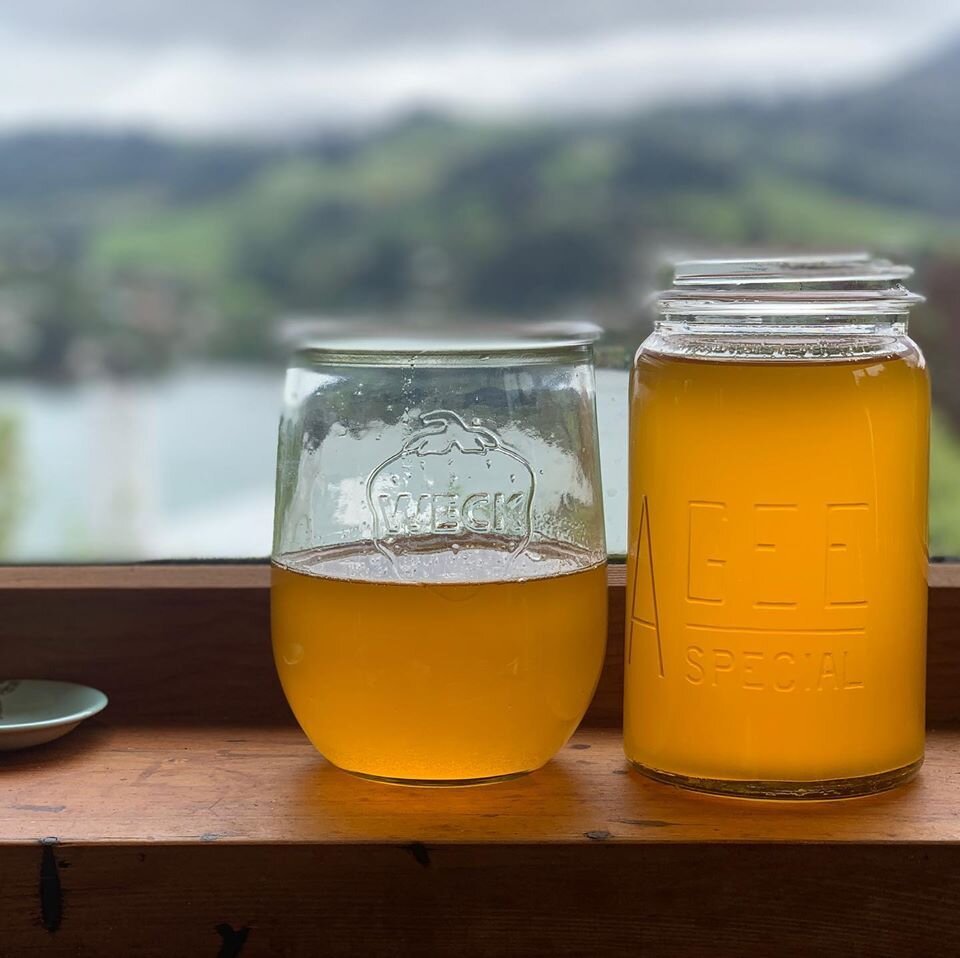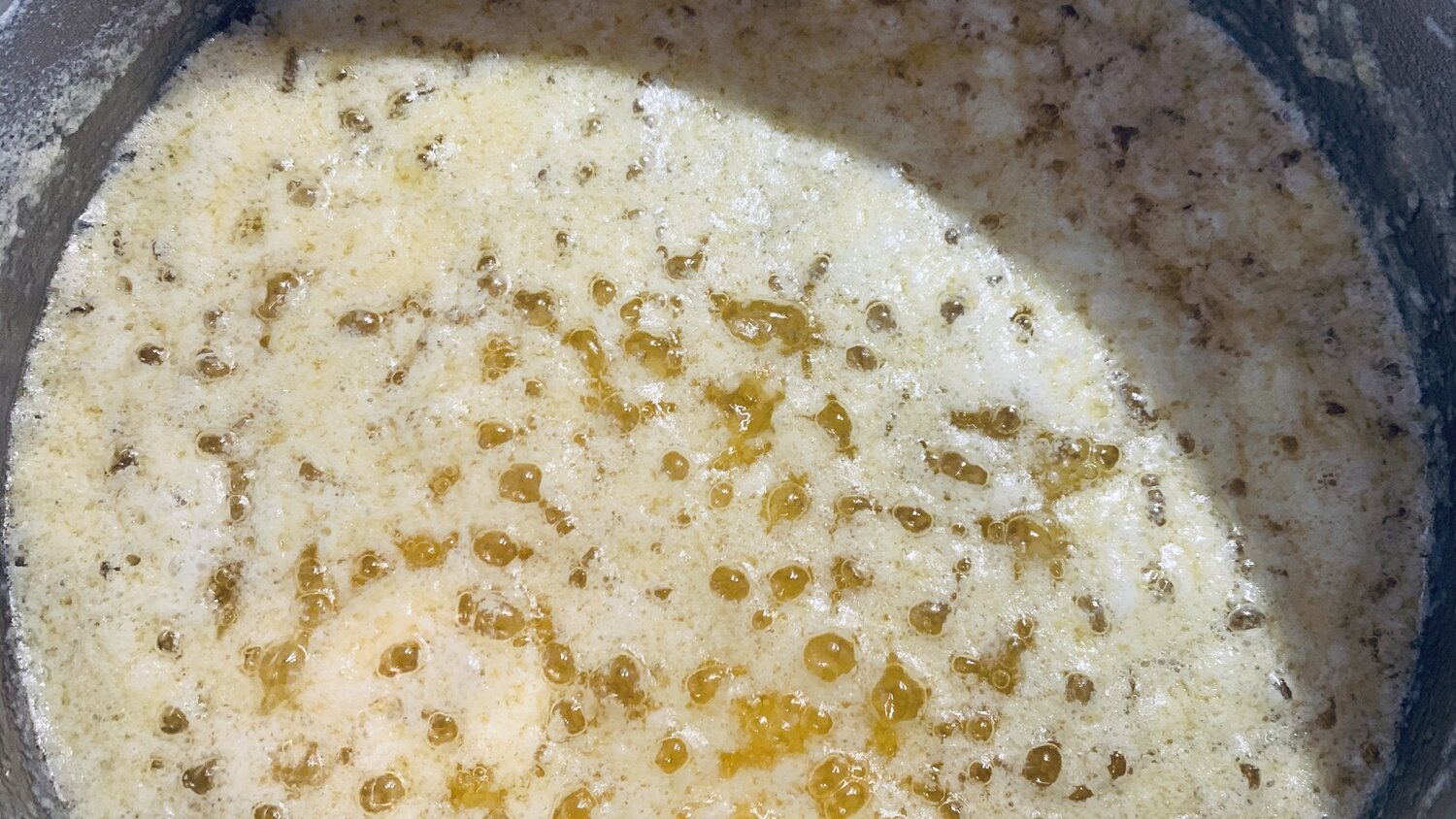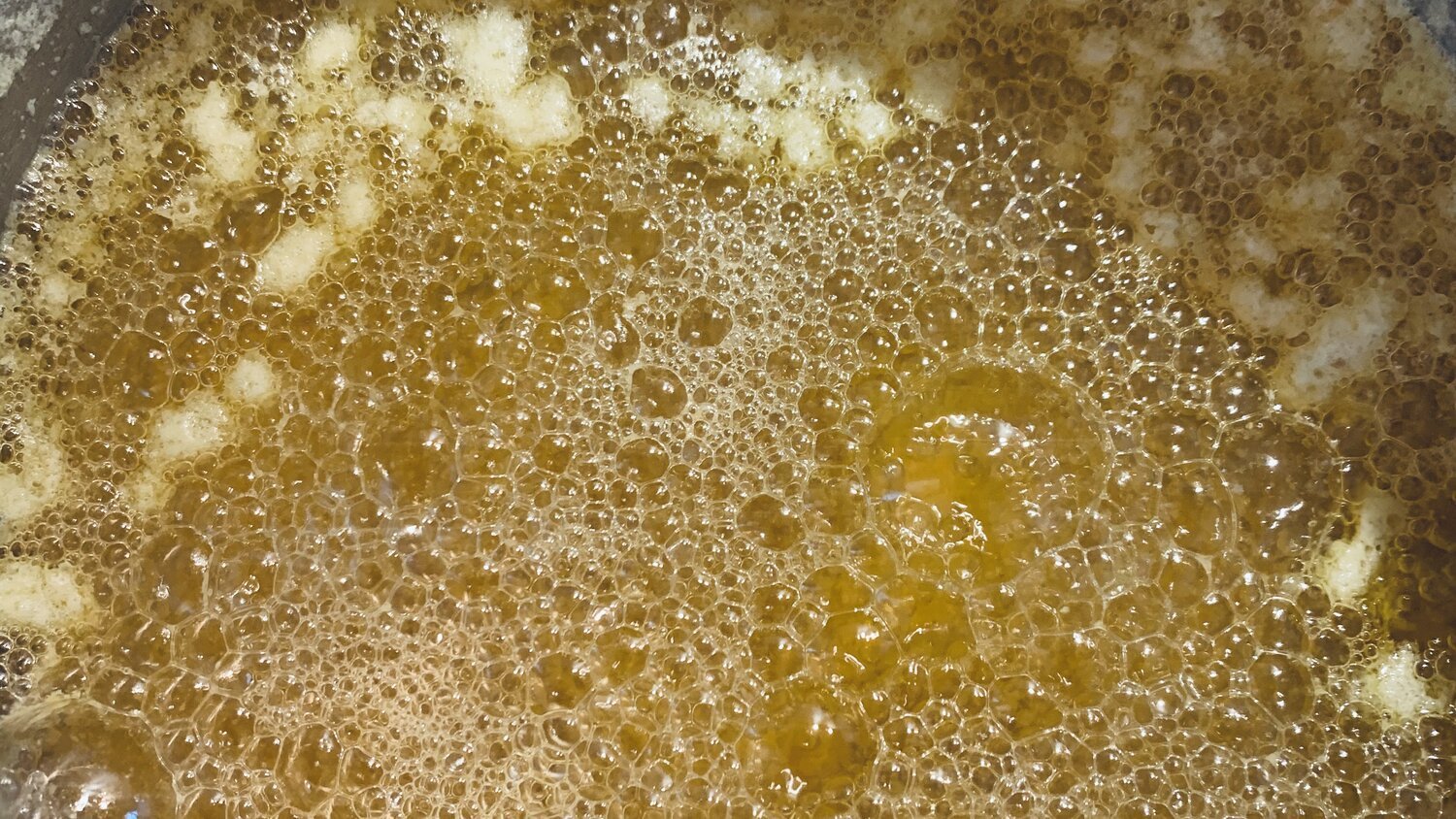Grey Days and Golden Ghee
I love making ghee on grey days. If you’ve never made ghee before, you should definitely do it, you will LOVE it I promise. The smell is divinely nutty and the colour is of liquid sunshine. Just make sure you watch it like a hawk towards the end… In the past I have been known to set 2 minute timers towards the end of the cooking time when I turn the heat down to low (in case I get distracted by the kids).
One of my many delicious memories growing up is of my Ba (Grandma) giving us a steaming little bakuri (bowl in Swahili) of basmati rice mixed with a touch of ghee while she was cooking the family meal. I always add a spoonful whenever I cook a pot of rice. It’s delightful.
Sidenote: My dad was born in Kenya so thats why we have a mix of Swahili and Gujarati going on in the family.
Ghee and Cooking
The clarifying process of removing water from unsalted butter creates a higher smoke point so you can use it for cooking at high temperatures (around 220°C) compared to oils such as extra virgin olive oil that are better for medium heat cooking (207°C). The smoke point means the temperatures that oils begin to degrade and oxidise.
Ghee is one of the dairy products that people who are sensitive to dairy may be able to handle. The clarifying process also removes both the casein and lactose and so many (not all) who have a lactose or casein intolerance can tolerate ghee.
Ghee:
1-4 Blocks of Unsalted Butter (You can make as much as you would like, just add an extra 10-15 minutes per block of butter).
A nice deep pot with a heavy base
A fine strainer that allows a decent amount of liquid to pour through it. Fine muslin is excellent too.
Instructions:
Place the butter in a heavy based saucepan and turn the heat to medium to melt the butter.
Once the butter has melted and begins to make a bubbling sound, reduce the heat to low.
The milk solids at the bottom will begin to brown. Occasionally stir very gently to avoid burning but you don’t need to scrape the bottom of the pan too vigorously. This could take a good 15-20 minutes. Skim the top layer of foam into a bowl. The ghee will become a beautiful clear golden colour.
Once the solids have separated out completely it is a good time to begin watching the ghee like a hawk. At this point I like to set 2 minute timers if I am around my kids as it’s usually at the last minute I get distracted! Once the bubbling has stopped and you have a beautiful golden translucent liquid it's ready to be taken off the heat.
Strain
Carefully pour the beautiful golden layer into a clean dry glass jar using a strainer or muslin cheesecloth. Leave the milk solids in the saucepan. The ghee will last for weeks and up to 6 months at room temperature. Store in a cool, dark place and keep airtight. Enjoy!
Ghee and Nutrition
Ghee, like coconut oil, is a saturated fat so we don’t need lots. There is a lot of chat around these fats and how much to use in our daily diets. I use ghee in the quantities that I use butter in my dietary pattern. However if you are wondering, a really fascinating way to check is by arranging a blood test when you are next at the GP. You can check triglycerides, total cholesterol and HDL cholesterol (& do all the other things while you are there. You may have to pay for vitamin D). If you are in a nice range then go ahead. If you are not in the recommended ranges, you have the wonderful opportunity to reverse those numbers and your biochemistry through diet and lifestyle modification. It is always good to check up regularly with how you are doing in these areas instead of getting a surprise.
On the topic of fats…
In addition to ghee, we want to also make sure we are consuming a really good range of seeds, nuts and if you eat fish, kai moana (seafood) that are rich in omega 3 fatty acids. These are the fatty acids that are involved in cognitive development, reducing inflammation, pregnancy and preventing cardiovascular disease and so much more.
Omega 3 fatty acids include oily fish such as salmon, mackerel, anchovies, tuna, mussels and walnuts, hazelnuts, almonds, chia, hemp, linseeds that are converted in the body. The plant based sources convert from Alpha linoleic acid, ALA, to the forms we use in our bodies eicosapentaenoic acid, EPA, and docosahexaenoic acid, DHA.
Ayurveda, Full Moons and Ancient Traditions
Ghee is one of the oldest, most auspicious, sacred, healing and nourishing foods in India. In Ayurveda, the ancient medical system of India, ghee is deeply revered for its anti-inflammatory, digestive, and therapeutic properties and the traditional cuisines of India are underpinned by Ayurvedic philosophy. Ghee is used extensively in Indian cookery, as a carrier for herbs and spices with medicinal properties and made into traditional foods with healing properties for certain stages of life i.e. combined with fenugreek and fennel to create breastmilk enhancing nutrient dense treats or used simply as a combination of ghee and herbs therapeutically.
Ghee plays a very sacred role in ancient Vedic and religious ceremonies in Hindu households all over the world. So these are some reasons why so many of us who are of Indian descent are rather besotted by this sacred, golden ingredient. Traditionally ghee is made on a waxing or full moon.




